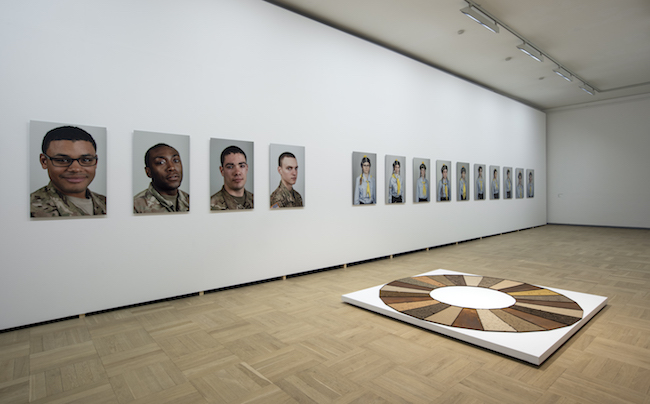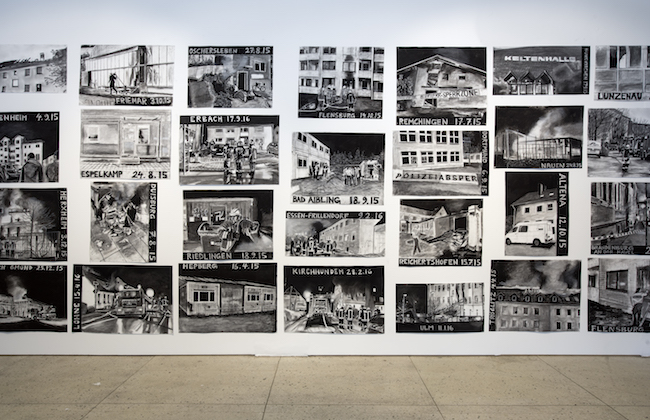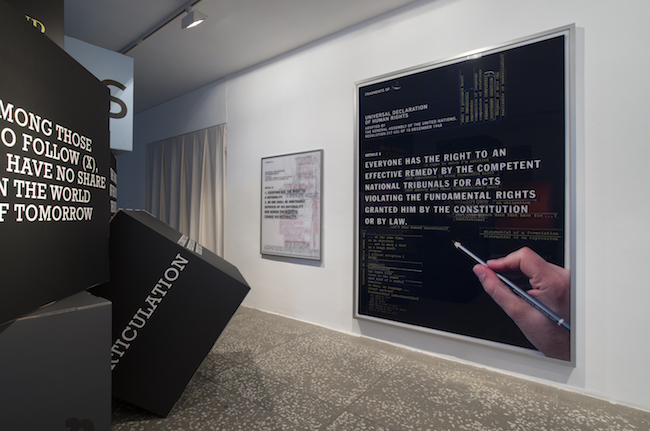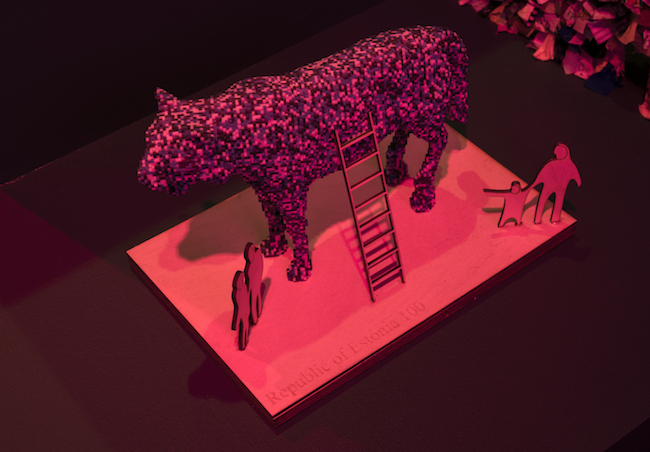
Achtung! An epidemic of banal nationalism runs through Estonia
Francisco Martínez
26/02/2018
Nationalism is like sugar – too generous a dose makes you dizzy.
Last weekend, I visited a shopping mall in Mustamäe and, besides promotional logos of Estonia’s 100th anniversary all along the road, I was surrounded in the supermarket by products that expressly advertise themselves as being Estonian (Estonian cakes, Estonian potatoes, Estonian carrots, Estonian bread, Estonian pork) or congratulate the Republic of Estonia for its 100 years since independence by featuring the Estonian flag on the packaging or appropriating national pathos in the comercial, even if the product comes from elsewhere (such as Paulig’s commercial). This also brings to mind the example of the Kvartal shopping mall in Tartu, which has big Estonian flags displayed all around the façade despite many of its shops being transnational companies (Zara, H&M, Esprit, Mustang…).
These days, every time I crossed Freedom Square I was on the lookout for marching, uh-hah-uh-hah-straight-turn-right, to the rhythm of flags and heroic music. Michael Billig coined the term ‘banal nationalism’ to describe ways of flagging the nation through ordinary, engaging activities, through small words and discursive, quotidian constructions (visuals, smells, soundscapes, habits, tastes…) that often go unnoticed yet make nationhood a familiar space. Estonia is no exception, and every day the nation is symbolised in the garden, in the clothing, in the food, in the materials of which the souvenirs are made, in the shape of windows, in music, in the way of showing emotions, at the bus stop, on the calendar, and so on. In addition to that, the country is recurrently presented by the media as being under attack, in danger of extinction.
At the weekend I also watched some of Eesti Laul (which, I have to say, is more spectacular as a TV show than the Spanish version). And I went to the re-opened Estonian History Museum in Maarjamäe and got dizzy on the nicely-presented hard-core dose of nationalism, de-politicised social problems and re-politicised history (Still? Is it possible? Even more? How come? Yes it is – visit the museum and judge for yourself).

Studio Jonas Staal, New Unions, 2018. Installation: Video, carpet. Commissioned by Tallinn Art Hall. Installation view of The State is not a Work of Art at Tallinn Art Hall, Estonia. 16 February – 29 April 2018.Courtesy the artist and Tallinn Art Hall. Photo © Karel Koplimets
Estonian design at the service of nationalism
The permanent exhibition at the Estonian History Museum is titled My Free Country(no irony) and consists of nine rooms: 1. Before the birth of the republic, outlining changes in the western part of the Russian Empire (such as electricity, sports, fast vehicles) that “culminated in the declaration of the independence of the Republic of Estonia”, but no mention to the Baltic Germans. 2. Building the republic, which includes military coats and household appliances such as an AEG fridge, an Electrolux vacuum cleaner and a Siemens electric shaver. Also, visitors can go on a ‘bike ride’ in Tallinn, Pärnu or Narva. 3. Life in the first republic, mostly focussing on leisure activities, tourism and how Estonia transformed itself “from a trilingual country to an Estonian-speaking country”. 4. World War II, with special focus on emigration. 5. Four decades of Soviet life are reduced to one room and presented though nuclear masks, discourses of brainwashing and political persecution. 6. Independence, the removal of old monuments and the installation of new heroes in their place. Street signs in Cyrillic are covered with black paint. Those who have grey passports (undetermined citizenship, held by 78,000 people in Estonia in 2017) are humiliated: “A large part of these did not recognise the fact of the occupation, thinking as a result of decades of propaganda that Estonia voluntarily joined the Soviet Union. It did not. However, not being given citizenship was still perceived as an injustice.”

Tanja Muravzkaja, Ours, 2017-18 (wall). Series of 20 photographs (pigment inkjet prints) 90 x 67cm. Commissioned by Tallinn Art Hall. Ella Littwitz, The Unknown Land of the South, 2017 (floor). Steel, soil, 200cm (d) x 1cm. Courtesy the artist, Marguerite Steed Hoffman Collection (Dallas), and Harlan Levy Projects (Brussels). Installation view of The State is not a Work of Art at Tallinn Art Hall, Estonia. 16 February – 29 April 2018. Photo © Karel Koplimets
7. The seventh room of the exhibition is dedicated to a display of “life and opportunities in a young republic”, including the country’s accession to NATO (there is a uniform of a soldier deployed in Afghanistan) and the EU (there is the tie of the current prime minister, Jüri Ratas). One can also watch a video with interesting interviews about the 1990s (Raud, Kivirähk, Komissarov…). 8. Contemporary matters, consisting of a room in which grand narratives about the past are complemented with de-politicised ‘solutions’, “real success stories, the internet, e-Estonia, start-ups, Baruto and Pärt”, and evaluations of voluntary work and charity (Let’s Do It, Garage48, Uus Maailm Street Festival, Vaname AU…), as if they were able to replace the state in the provision of services and welfare. 9. The final room holds a futuristic vision of Estonia “based on the idea that in 1000 years nature, technology and people have been completely interwoven”.

Thomas Kilpper, Burnout, 2016-17. Series of drawings, charcoal on paper, dims variable. Courtesy of the artist and Galerie Nagel Draxler, Berlin, Cologne. Installation view of The State is not a Work of Art at Tallinn Art Hall, Estonia. 16 February – 29 April 2018. Courtesy the artist and Tallinn Art Hall. Photo © Karel Koplimets
There are five more points related to the museum that are worth mentioning. 1. All along the stairs to the exhibition are statements pasted on the wall that already set the mood for what one is going to see: Anton Hansen Tammsaare, “Work hard and love will follow” (no irony); Lennart Meri, “To its citizens, Estonia is expensive and Estonia is dear; it eats a hole in their pockets but has a place in their hearts” (at the time, fiscal paradises such as Panama were not yet that well known); Heinz Valk, “One day we will win, no matter what”. 2. The narratives of the exhibition are in Estonian and English, but not in Russian (despite 27% of the country’s population having Russian as their native language). 3. All the “forgotten” monuments that were lying on the ground have been set up in an outdoor exhibition behind the museum, because “many of the monuments are of high artistic quality and deserve to be preserved from an art historical point of view”. 4. The Friendship of Nations (1987) mural by Evald Okas remains a part of the museum yet is somehow unattended, muted, with no information about the artist. It would be very easy to add Kristina Norman’s film Festive Spaces (2016) to understand the room better. 5. The museum has the best space for children that I have seen in a long while. My son truly enjoyed it, and I might come back just for that.
Estonia is becoming obese on nationalism
One would expect that after nearly three decades of regained independence the approach towards the past would be more mature, less defensive and less revanchist. However, there seems to be a new regression in regard to nationalism and the political abuse of history, to a great extent promoted by official institutions. (I am afraid of visiting the exhibition at the Gildi Hoone about the 11,000 Years of Estonian History. I’m sorry, but my health won’t be able to cope with another dose of “the uniqueness of the people who have lived here”, tracing the three lions and the three colours of the flag back to the Neolithic, drawing an imaginary line of Estonianness from now to then).
Dear doctor, I think I am affected by the epidemic. What would the cure be? Fasting? A bath of reality? Shall I go to the parade or not? And is this what post-post-socialism looks like, or has the new generation not yet ascended to power?

Jaanus Samma, New Year’s Boy, 2018. Installation and performance commissioned by Tallinn Art Hall. Installation view of The State is not a Work of Art at Tallinn Art Hall, Estonia. 16 February – 29 April 2018. Courtesy the artist and Tallinn Art Hall. Photo © Karel Koplimets
As Marek Tamm points out in the booklet for the exhibition The State is not a Work of Art at Kunstihoone, “Countries liberated from the sphere of influence of the Soviet Union saw a nationalist ideology as the best possible way of asserting their identity and reinstating sovereignty.” Yet to present Estonian society as homogeneous, unilinguistic, only dedicated to creating start-ups and doing voluntary work, and passively agreeing with nationalist rhetoric, and to reduce the Soviet experience to a total farce in an official history museum in 2018 is not only delusional but adds new wrongs to Estonia as a state and perpetuates social problems.

Thomas Locher, A Hundred Thousand Billion Societies, 2017. Comissioned by Tallinn Art Hall. Courtesy Gallery Reinhard Hauff, Stuttgart. Courtesy of Lisa Ungar. Installation view of The State is not a Work of Art at Tallinn Art Hall, Estonia. 16 February – 29 April 2018. Courtesy the artist and Tallinn Art Hall. Photo © Karel Koplimets
If you’re too lazy for fasting or a bath of reality, you can at least visit the exhibition at Kunstihoone, which has a more complex and critical take on the relationship between nation, state and nationalism. Already the invitation of a foreign curator (Katerina Gregos) to treat these topics critically in Estonia and in the midst of the 100th anniversary celebrations was a brave move, and the result is an empathic, accessible and also educational show. It is perhaps a bit toothless in regard to Estonian matters and too Eurocentric (artwork dealing with Chinese, Venezuelan, Cuban, New Zealand or Angolan nationalism would have added another layer to the show), but it nevertheless features high-quality artwork and picks such as Jaanus Samma’s New Year’s Boy, Femke Herregraven’s Liquid Citizenship and Larissa Sansour’s Nation State.

Kristina Solomoukha & Paolo Codeluppi. Installation view of The State is not a Work of Art at Tallinn Art Hall, Estonia. 16 February – 29 April 2018. Courtesy the artist and Tallinn Art Hall. Photo © Karel Koplimets
As I heard from one of the persons involved in the exhibition, the curator herself had to go through a learning process for this project, having arrived in Estonia with a rather narrow understanding of nationalism (more humanistic and cosmopolitan than geopolitical). And that is perhaps a lesson for all of us, too – to be more open about questioning what we understand as nationalism. Also that something as pure as nationalism is mostly created through borrowings and distortions.